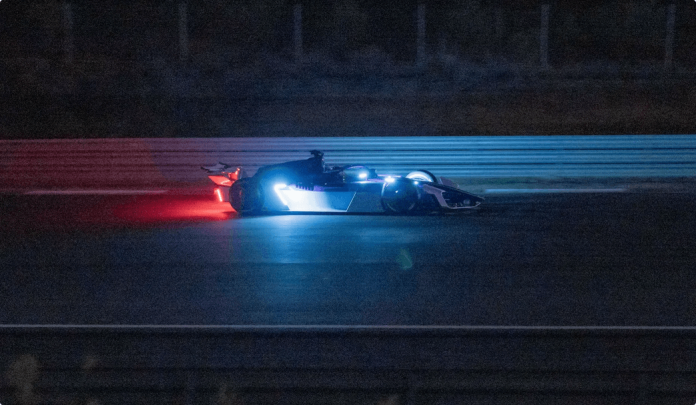While motorsport has lived with the roar of engines and the smell of gasoline for centuries, Formula E has turned out to be a real challenge to established positions. Although many still argue whether Formula E will ever be able to eclipse the legendary Formula 1, right now, we are witnessing how electric racing is becoming an integral part of the world movement in motorsport, to which even the most devoted fan of NASCAR or IndyCar can’t turn a blind eye.
Electric Drive and New Rules of the Game
In the event that only a decade ago the prospect of a complete electric racing series was a story that belonged to a science fiction book, today Formula E is much more than an experiment that encompasses millions of fans, major manufacturers, and an actual impact on the race. Since the series premiered in 2014, the show has evolved from a niche concept to one of the most discussed fields in the motorsport industry.
Although Formula E was positioned as a European project, today it is actively conquering the American market: Championship rounds are already held in the US, and giants such as Tesla, Ford, and GM are investing in the development of electric technologies for motorsport. Moreover, even NASCAR and IndyCar are beginning to implement hybrid and electric solutions in order to be on par with global trends.
All this gives a new chance not only to sponsors and teams but also to fans, as the market turns out to be more diverse and full of high technology. Fans increasingly look for new forms of entertainment, and, for example, a $5 deposit casino, with its low entry threshold and accessibility, fits closely with the philosophy of digital motorsport. This is especially relevant for young fans who are accustomed to digital services and seek new emotions not only on the track but also in the online space.
Future Technologies: What Makes Formula E Unique
In contrast to the old-school series, the battle is won using each additional horsepower and the mass in Formula E, so the energy consumption, tactical considerations, and creative solutions are put into the foreground. The following are only some of the technical enhancements that already characterize the face of the series to this day:
- Solid-state batteries: The new breed of batteries will bear more energy density and charge faster, and will be safer. These improvements will allow longer races and less time taken during pit stops;
- AI strategies: Already, artificial intelligence helps teams analyze telemetry, predict energy consumption, and choose optimal moments for an attack or saving;
- Regeneration of all wheels: In the present case of utilization of the rear axle energy only, in the next few years, systems will also be applied to the front wheels, which will then make the use even more efficient;
- Charging over the track: Engineering scientists are in the process of creating a technology through which the cars will be able to get charged as they pass over designated areas of the track, which may entirely alter the race strategy.
These and other innovations make Formula E not only a laboratory for future mass-produced electric vehicles but also a true testing ground for engineering breakthroughs. Already today, many solutions first tested in racing find application in consumer models, from regeneration systems to advanced battery cooling technologies.
Key Differences of Formula E Compared to Traditional Series
To illustrate, let’s emphasize the main advantages of Formula E that make it unique compared with other racing disciplines in 2025–2026:
|
Category |
Formula 1 |
Formula E |
|
Top speed |
370 km/h (230 mph) |
322 km/h (200 mph) |
|
0-100 km/h acceleration |
~2.5 sec |
~2.8 sec |
|
Power output |
1,000+ hp (hybrid V6) |
470 hp (350 kW, electric) |
|
Race format |
Traditional circuits |
City-center street circuits |
|
Energy source |
Hybrid fuel + ERS |
100% electric |
|
Carbon neutrality goal |
By 2030 |
Achieved since inception |
|
Fan engagement |
Limited (traditional TV) |
FanBoost, AR/VR, free streaming |
|
Manufacturer presence |
Ferrari, Mercedes, Red Bull |
Porsche, Jaguar, Nissan, others |
|
Battery tech |
N/A |
40%+ regen, solid-state R&D |
|
Sustainability focus |
Medium (hybrid, biofuels) |
Maximum (net zero, recycling) |
Thus, Formula E is not just the “younger brother” of Formula 1 but an independent discipline with its own advantages and emphases. And it is precisely these advantages that allow Formula E not only to attract a new audience, especially among fans of sports-themed games, but also to shape a completely different image of motorsport.
However, for now, in terms of speed and spectacle, electric cars lag behind gasoline ”monsters” — the maximum speed of Gen3 is 322 km/h compared to 370 km/h in F1, and acceleration to 100 km/h takes 2.8 seconds compared to 2.5 seconds for the leaders of the “queen of motorsport.” Yet the gap is gradually closing.
Conclusion: The Future is Already Here
Formula E is not just a “green” alternative or a temporary trend. This is where technologies are born that tomorrow will become the standard for consumer cars, and where the approach to engaging fans and sponsors sets new rules of the game for all market participants.







